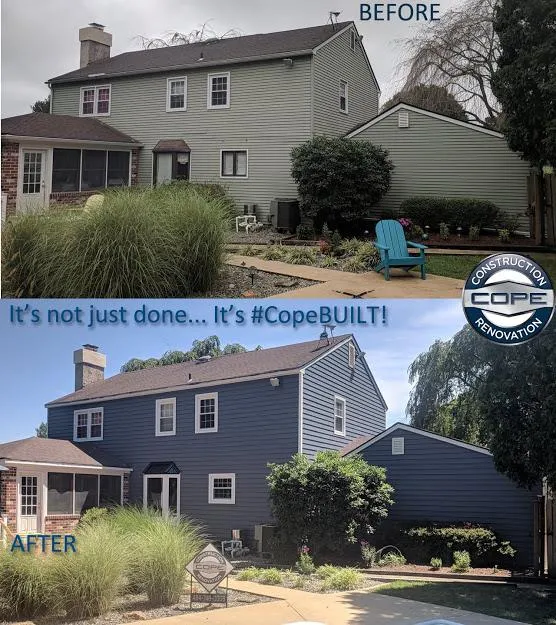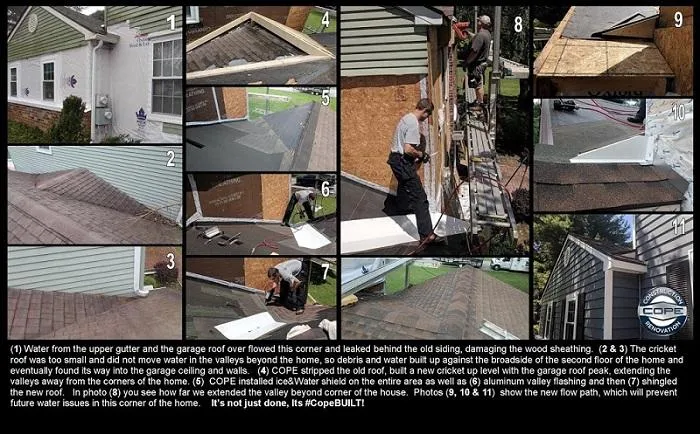REPAIR ARTICLES
What Should You Know Prior to Repairing Vinyl Siding, Stucco, or Brick?

Vinyl Siding, Stucco, and Brick repair are big projects for any homeowner. These tasks must be addressed in a way that keeps the integrity of the home a priority.
For example, one question to consider is should you replace windows at the same time you replace stucco? If you are going to upgrade the exterior cladding of your home, and you plan to replace your windows, it makes a LOT of sense to do both projects at the same time. Some claddings (stucco, cement board, etc) are more difficult than others (vinyl siding) to take apart so you can replace a window unit with a New Construction style window.
If you have wood jams, you can put a "replacement window" in after the exterior is done, but there is a lot of work to cap those old wood jams with aluminum before installing the "replacement" style window. You'll get a better quality job, and more viewable glass with new "new construction" style windows, installed at the same time as your new exterior cladding, and your installer will be able to do a better job with the "waterproofing" and flashing as they incorporate everything into your exterior wall system.
Stucco fails for several reasons, but generally, it’s because manufacturers and installers didn't understand the building science of the product before 2005, and a lot of stucco applications before that time did not include a moisture barrier with a drain cavity. This means they didn't pay attention to the water control barrier considerations. Stucco was installed directly on OSB sheathing. Stucco is porous moisture gets through and the OSB sheathing sucks up that moisture like a sponge, and then the mold starts. Some of the worst installs lacked flashings around penetrations like windows and doors and kick-out flashings over gutters and other wall transitions standing there like a giant welcome sign inviting the rain to come on in and have a party.
A proper exterior installation is going to have the exterior cladding which keeps the brunt of the rain out (stucco, cement board, vinyl siding, stone, brick) but it's more important what you have behind it. There should be an air gap and a drain cavity for moisture (and condensation) that gets behind the cladding, a way for that water to escape at the bottom, rather than be forced into your home.
Vinyl Siding, Stucco, Brick, none of it is "waterproof." There should be a Water Resistive Barrier (WRB) between the drain cavity and the sheathing (foam or wood). Somewhere in that wall is also going to be your insulation (thermal control layer) and a vapor control layer, but those usually aren't addressed by the exterior contractors, unless you have 1 inch or 2-inch foam on the outside of your stud-wall.
When it comes to that Exterior cladding... you have lots of options for what to put back up. Modern-day stucco installation requirements have improved, but many are gun-shy from the "stigma" that comes with buying a home that has stucco, and the stucco inspection process.
Many homeowners go with the simple, safe choice of Vinyl siding, but even that comes with multiple options from size and style, insulated or non-insulated, and then what color. James Hardie cement board is considered by some to be more durable. There are several versions of fieldstone, ledge stone, and brick available, and there are also products like GenStone that look like brick, but go up like siding. I would venture to say that wood is no longer common with its constant need to be painted every few years. Some companies make siding from PVC and there are options in metal.
This article may be helpful as you evaluate options.
Regardless of what material you select, your installer must be able to articulate to you proper flashing methods for the product they are installing, and it should be clear that they understand how to reconstruct the drain cavity and WRB as it relates to the product they are going to be installing, in keeping with all manufacture recommendations.
Here are a couple of videos that show what can go wrong when the flashing layers aren't installed correctly.
Here are videos from an exterior we did in January February 2020 in Avondale / Landenberg, and below are images from a vinyl siding project.

Need an estimate on stucco repair/installation? Try our Virtual Estimate System (VES)!
Learn more about our 14 Step Process.
What type of work does COPE provide? Our team is experienced in all manner of new home design and construction, additions, garages, renovations and remodels, along with all types of home repairs. We can assist you with Kitchens, Bathrooms, Finished Basements, New Construction, Custom Homes, Drywall, Plumbing, Electrical work, Windows, Doors, Siding, Roofing, Exteriors, mysterious water leaks and more... What Problem can we SOLVE for you?
We're your local team! When we're finished, you'll be proud to say, "it's not just done... It's #CopeBUILT!
COPE Construction and Renovation is a registered and insured Pennsylvania Home Improvement Contractor. PA88078. We look forward to serving you soon!
